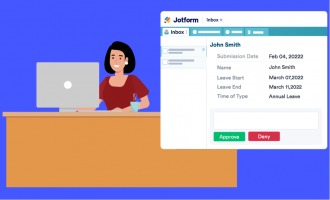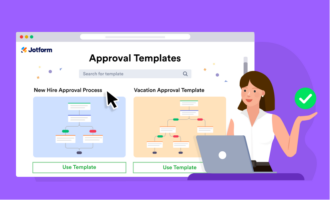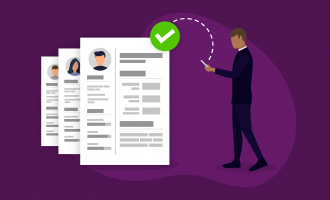In the risk-averse world of human resource management, many leaders search for ways to proactively improve day-to-day processes to be more productive and efficient at helping employees.
The difficulty comes when these tactics run up against the natural levels of caution and security built into many HR processes. So how can organizations achieve real, effective change in this department?
The answer lies in implementing an agile approach across HR to better tackle common issues and tasks. Doing so will help HR employees’ do their jobs faster, which gives them more time to help other employees.
With that in mind, let’s break down an approach for agile HR, how businesses can incorporate it into the different elements of HR, and the tools that can help make this process a success.
What it means to be “agile”
Agile is a modern framework for process management defined as an iterative workflow designed to approach projects in “sprints” (or short cycles of work), with each sprint made up of predefined shorter stages. The stages in a sprint repeat in the same order, so each cycle follows the same structure, no matter what the intended outcome is for each portion of the overall project.
Agile is a creation of the software development world, and that’s where it was first implemented to help engineers tackle large-scale tasks by dealing with the different pieces in siloed increments. This approach helped focus efforts on each sprint individually to manage productivity at a more direct level.
More and more fields have since experimented with agile, with HR being one of the promising new industries where it can have a positive impact.
How HR teams are going agile
Already, many companies and teams are taking advantage of agile HR to tackle pressing employee needs and better manage human capital. The incremental approach is a perfect fit for many people-facing roles, and HR, in particular, is in need of an upgrade.
To give an overview, teams are starting to see how agile HR can better serve employees. More specifically, the practice is a natural fit for specific HR tasks like reviews, team building, onboarding, and organization, to name a few.
All in all, the agile transformation of HR is helping the field redetermine how it defines goals and fulfills common HR functions. Over time, the sprint cycle approach will benefit not just the teams that use it for work, but also the employees who benefit from the results.
How agile HR works in practice
Agile approaches have benefits across the HR ecosystem. But at the core of these processes, agile HR is about accelerating essential workflows to improve functionality.
To that end, agile HR has a number of essential features:
- Establishing a consistent feedback model. Within the agile process, sprints produce consistent and constant feedback that helps the recipients strategize for the best response.
- Implementing codified decision trees. Delegating information across HR is a common process block, but with agile, HR managers can properly distribute tasks and identify end goals that serve the larger goals of the organization.
- Expanding employee learning. Agile approaches aren’t just about the long-term goals of the business; they also help staff learn how to demonstrate thought leadership capabilities. An HR manager could delegate and execute on essential tasks while building toward better downward management over time.
How Jotform can help with agile HR
Agile approaches aren’t just about improving the way you work — they’re also about the way you incorporate technology. Online form builder Jotform provides exceptional tools that help automate crucial aspects of HR to transform basic functions into an agile HR machine.
With agile, businesses can easily convert day-to-day HR functions — like keeping track of timesheets and scheduling — into automated digital systems, thereby allowing managers to directly take control of how their staff manages information.
Beyond ongoing management, a lot of HR teams struggle to manage the onboarding and recruitment process, but an agile approach powered by digital technology helps make it far easier by using quick data collection and results-oriented approaches.
At the end of the day, an HR team should focus on assisting team members, accurately gauging their performance, and supporting the long-term retention goals of the company. With the help of agile, they can achieve all of these goals.
Every business that uses data is looking for processes that can help improve its approaches. Too often, they get stuck overlooking simple shortcuts and trying to force tactics that aren’t designed to work.
With agile, large-scale enterprises can unlock an exceptional approach to human resource management that goes beyond the status quo to deliver the kinds of results that make employees feel valued. Whether through feedback, education, or beyond, the agile HR strategy is built to serve both employees and organizations for years to come.
Photo by Cherrydeck on Unsplash













































Send Comment: